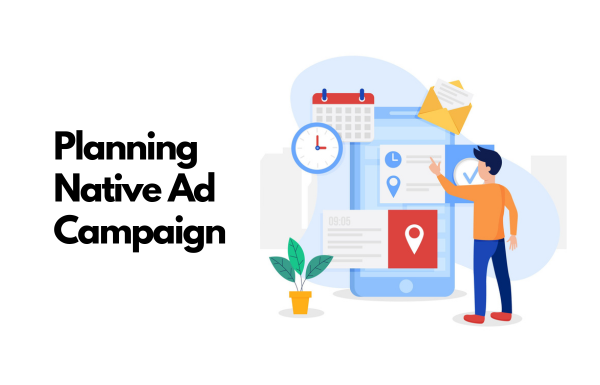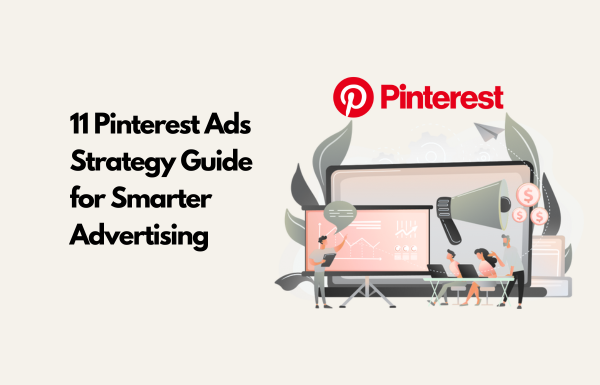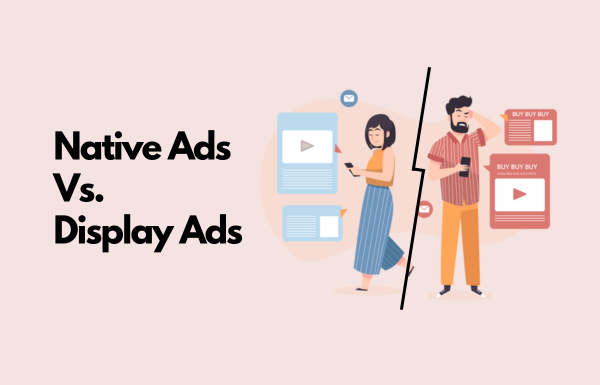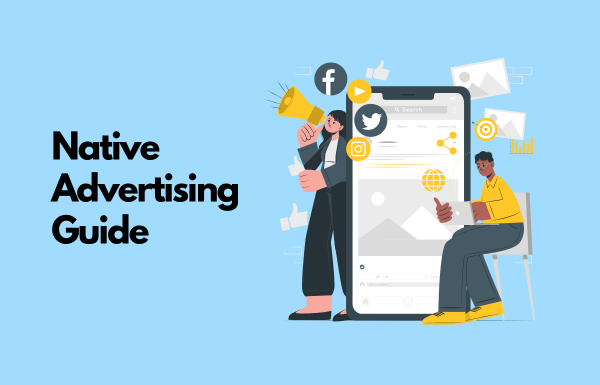Native advertising is one of the most effective ways to reach your audience without disrupting their browsing experience. If you’ve decided to explore native ads, you’re already on the right track. However, you see a big question mark on:
- where to start
- how to structure your campaign
It’s necessary to structure your campaign properly from the very beginning. If you start with a mismatched flow, you’ll lose a bunch of money, and you may think it isn’t meant for your business.
However, all you need is the right process for the right results.
Well, in this article, we’ll help you plan your first native ads campaign strategy from scratch. The process we suggest is proven and will definitely help you put together a successful campaign. Keep reading as we start with the steps you need to follow. Starting with the basics.
What are Native Ads?
Native ads is a type of paid media that blends with the format, style, content, and tone of the platform it appears on. These ads are designed specifically to fit with surrounding content and give off a more organic and less intrusive feel.
At the core, Native Ads focus more on delivering value at first, be it through content or storytelling, while still meeting marketing goals to spread awareness, and bring in engagement and conversions. It’s more about striking the right balance between visibility and subtlety, which is exactly why it works for campaign success.
Why Does Your Approach to Native Ads Determine Your Outcome?
Usually, when advertising on a platform (like Meta ads), your ad creative and bidding strategy alone are factors to drive success. Native advertising, on the other hand, demands a more layered and deliberate approach.
Your approach to native advertising matters as native ads run on multiple aspects altogether.
You could call naive advertising to be an interconnected ecosystem where even a minor weakness in one component can create a ripple effect that disrupts your entire strategy.
Running an ecosystem demands a broader perspective on multiple areas including:
- How your content appears in-feed
- How it’s perceived by a cold audience
- How trust is built through subtlety rather than hard selling
- How performance is tracked through accurate attribution
… and much more.
To run native ads successfully, you need to think of the entire ad setup. In that ad set up, each of the ad components should work in harmony to move the audience toward taking action. From your ad copy to who you’re targeting, the platform you’re on, and what happens after the click should be friendly to each other.
This is because all native ad components are somehow connected. And everything needs to work together.
When everything is planned well and works together, native ads can scale really well. Just that it requires patience, careful planning, and attention to detail. If the approach is messy or incomplete, there are chances of experiencing poor results.
If you’re new to this or unsure where to begin, our native advertising guide breaks down the structure and strategy you need to get it right.
But keep in mind that all you need is good planning to make it work. We’re helping you plan that right below.
Step-by-step Process to Plan Your First Native Ads Campaign
In this guide, we’ll walk you through everything you need to plan and launch your first native advertising campaign, from strategy to creatives and budget planning.
Let’s jump right in.
Step 1: Figure Your Native Advertising Goals
Before you start writing your ad copies or selecting a platform to run native ads with, you need clarity on why you’re running the campaign. Generally, native ads can support two of your objectives.
- Branding Goals
- Performance Goals
Let’s discuss them well.
Branding Goals
Branding goals mean getting attention and introducing your brand or product to a new audience.
Native formats are perfect to help you meet your goals as it helps your ad feel like regular content of your chosen ad platform. People consume the given information or offering naturally, giving your brand better attention.
Here, the metrics you’d consider tracking are:
- Impressions
- Pageviews
- Time on site
- Video views and completion rate
- Brand recall or brand uplift (if you’re running surveys)
Example: A new D2C skincare brand could use native video ads on women’s lifestyle sites to raise awareness and build trust through informative content.
Performance Goals
If you’re aiming for direct results, such as lead generation, purchases, and subscriptions, native advertising helps you meet those performance goals too. Native ads campaign can help you drive strong performance, especially when you’ve already built some awareness and are retargeting or showing content further down the sales funnel.
Here, the KPIs you’d consider tracking are:
- Click-through rate (CTR)
- Conversions (sales, signups, downloads)
- Cost per acquisition (CPA)
- Return on ad spend (ROAS)
Example: An eCommerce brand selling ergonomic office chairs might use native ads to promote a blog post like “5 Signs Your Office Chair Is Slowly Ruining Your Back”. The post educates readers, builds trust, and links to their top-selling chairs. From there, users enter a retargeting funnel offering time-sensitive discounts or video testimonials to drive conversions.
See, the thing is that you need to figure out on what you want out of native ads campaign. It could either be that you want more people to know your business or you want to bring them to purchase.
Choosing between your goals is highly important to figure out your further plan for strategizing the entire campaign.
To choose, figure out which metrics you want to track and which KPIs matter most to your goals and strategize user journey based on that.
Once you figure that out, move to the next step.
Step 2: Know Your Target Audience
Your native ads campaign would work best when you deeply understand who you’re trying to reach.
Unlike search ads (which meet high-intent users) or social (which work on interest signals), native ads appear when the user is consuming content, not really expecting your brand to come around and throw in a pitch.
And a native ad works best when you deeply understand who you’re trying to reach. When you go in with the right pitch, right tone, and every right element, then only you’ll be able to gain their attention and convince them into making click on your CTA to join the sales funnel further.
Here are the areas you should know about your audience so you can align your ad with their content experience.
- Their problems
- Their preference for content that they read or watch
- Their preference for content tone and visual style
- Where they spend their most time
For example, consider that your online business is a beauty store selling skincare products. And your audience is women with an age range of 20 to 50.
Here’s how you can put in details about your audience and then move forward.
| Age | Key Skin Concerns | Content Preference | Tone & Style Preference | Go-to Platforms |
| 20–29 | – Acne
– Oiliness – Pigmentation |
– Short videos
– Tips – Carousels |
– Playful
– Trendy |
– TikTok
– IG Reel – BuzzFeed |
| 30–39 | – Early aging
– Dullness – Stress-related issues |
– Routines
– Expert videos – Comparisons |
– Relatable
– Clean – Wellness-driven |
– Instagram
– YouTube |
| 40–50 | – Wrinkles
– Dryness – Loss of elasticity |
– Guides
– Testimonials – Ingredient explainers |
– Calm
– Elegant – Credible |
– Facebook
– YouTube – Publisher sites |
To gather these details you can use multiple tools. Let me suggest you a few.
- Google Analytics for demographics and interests
- Facebook Audience Insights for data outside of Meta.
- Reddit and Quora to see what your audience is talking about.
- SimilarWeb & SparkToro to understand where your audience goes online.
Step 3: Pick Your Native Ads Platforms
Now that you’ve defined your audience and goals, the next step is deciding where to run your native ads campaign. Here, we select platforms (or publishers) that will distribute your content across relevant websites.
There are two main routes you can take.
1. Use a Native Ad Network
There are multiple platforms that help you distribute your content across a large number of publisher websites.
These publisher websites include significant brands like CNN and Forbes to smaller niche blogs. All you’re required to do is upload your ad once, and the network will place it across multiple sites.
Here are some popular native ad networks:
- Taboola: Great for reaching audiences on news and general interest websites.
- Outbrain: Known for high-quality publisher partnerships and premium inventory.
- MGID: Offers global reach at an affordable price; often used by eCommerce brands.
- Revcontent: Has a strong presence in the U.S. with high-volume traffic options.
With each of these platforms, you can:
- Choose the content you want to promote
- Set your audience targeting (like location, device type, interests, etc.)
- Control your budget and bidding strategy
Overall, you’ll have complete control over your campaign.
2. Direct Deals with Specific Publishers
If you already know where your target audience spends time (for example, on sites like TechCrunch or Healthline).
You can reach out to those publishers directly and negotiate native ad placements or collaborations. This approach can be powerful for highly targeted campaigns but usually requires more effort and budget.
3. If You’re Selling on Marketplaces
If you’re selling on marketplaces like Amazon, you can also make the right use of Amazon advertising offerings.
Talking specifically about Amazon native ads, it’s a type of advertising format that Amazon offers, designed to blend seamlessly into the user experience and content of a website or app.
These ads appear within the user interface of certain Amazon devices and services, as well as on third-party platforms. They are not just banner ads, but rather integrated into the flow of content, making them less intrusive.
How Do You Figure Right Platform?
A right platform to place in native ads would depend on a lot of factors, including your goals, audience, and budget.
Let me share a few insights.
- If you’re looking to reach a broad audience and gather data quickly, native ad networks are a great place to start. They offer faster scaling and help you learn what works with their targeting tools and performance insights.
- On the other hand, if you already know any platform preferred by your audience, say, specific media outlets or niche blogs, direct publisher deals might be more effective. This offers more control over placement and collaboration, though they usually require a higher budget and more negotiation.
Ultimately, the “right” platform depends on your specific needs.
If you’re new to native ads, start with a network platform to gather data. If you already have strong audience insights and a targeted approach, direct deals can help you go deeper.
Step 4: Create Content That Aligns with Your Funnel
Now comes the time when you start building ad creatives.
When running native ads, it’s important to write your marketing copy and design your visuals in a way that feels natural to the platform you’re using. To get the best results, we suggest you create content that aligns with where your audience is in the marketing funnel.
- Top Funnel (Awareness stage): Are they aware of your brand?
- Middle Funnel (Consideration stage): Are they considering your offerings?
- Bottom Funnel (Conversion stage): Are they interested in making a purchase?
Each stage of your marketing funnel requires a different content types.
If the audience intent isn’t a match for your ad content (such as: showing a ‘make a purchase’ offer to someone who just discovered your brand), your campaign will underperform.
Here, I’ve suggested how you can align your ad content based on where they are in your sales funnel.
Top of Funnel (Awareness)
In this initial phase, you’re connecting with individuals who are just becoming familiar with an issue or your brand.
Their browsing is casual and exploratory. So, your approach to reaching them should be about grabbing their attention, providing valuable insights, and getting them to know your brand.
Below I’ve attached a content strategy that you can use to target top-funnel audiences for your native ads campaign.
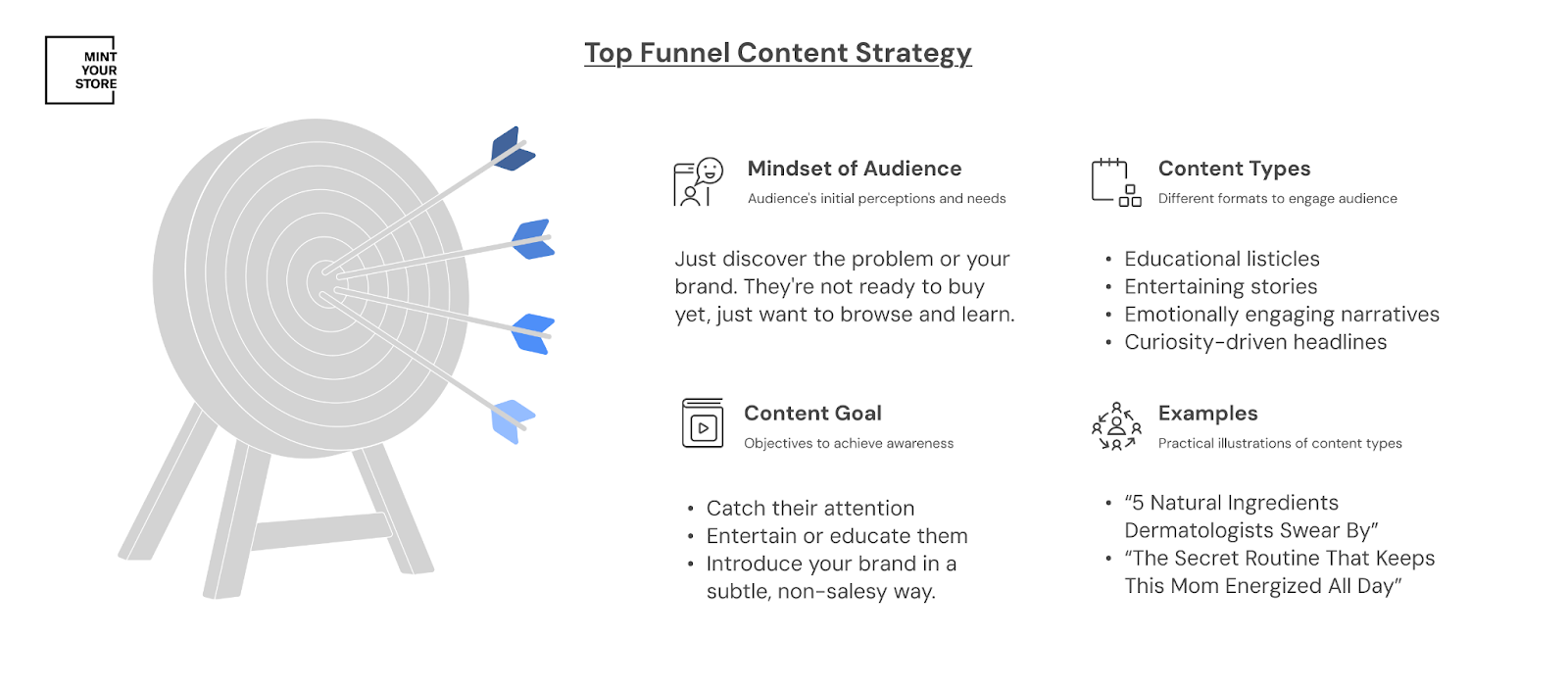
Middle of Funnel (Consideration)
In the consideration phase, you’re engaging with people who recognize their problems and are actively seeking solutions.
They’re comparing options but may not know about your specific offering yet. Your approach should focus on educating them about solutions while positioning your brand as a valuable resource.
Below I’ve attached a content strategy that you can use to target middle-funnel audiences for your native ads campaign.
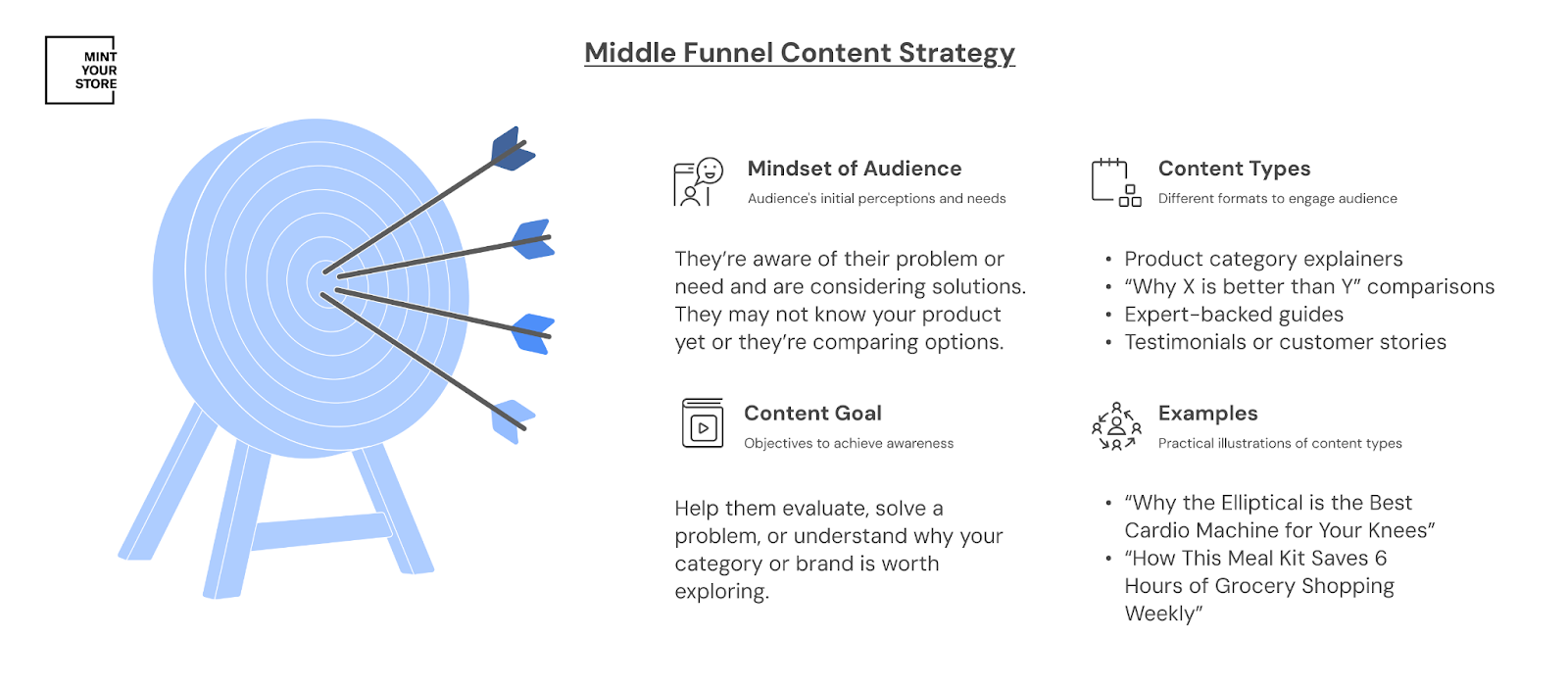
Bottom of Funnel (Conversion)
In the decision phase, you’re connecting with prospects who are considering your products but need that final push to purchase. They understand their problem and potential solutions, including yours.
Your approach should focus on removing any last obstacles and creating urgency to act now.
Below I’ve attached a content strategy that you can use to target bottom-funnel audiences for your native ads campaign.
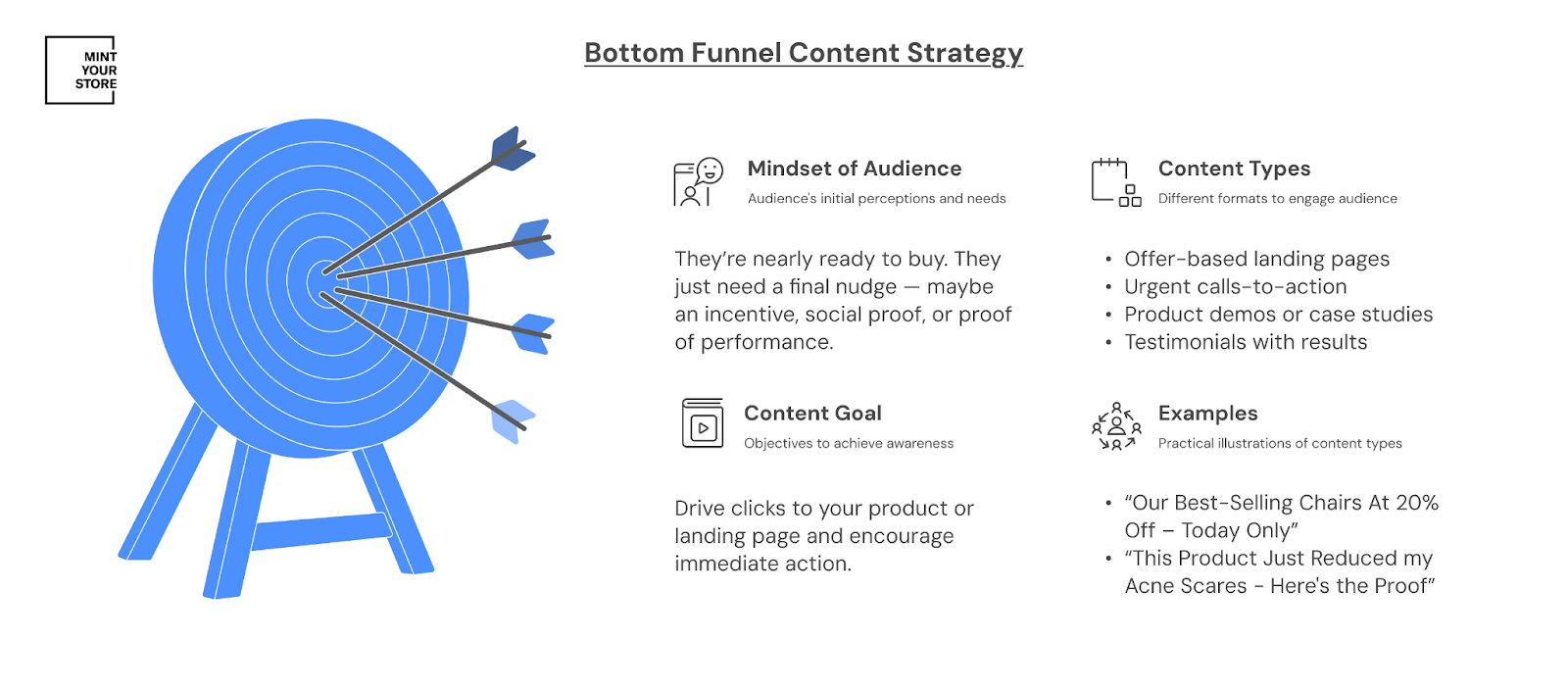
Based on this information you can start preparing your content.
Additional Tips to Consider
Here, I’ve added a few native advertising best practices that you can follow when creating content for your native ads campaign.
- Ad images or videos should be high-quality and relevant.
- Use a balance of images with and without people, as people naturally react to faces.
- Focus on offering value with useful information or entertainment that naturally leads to conversions.
- Provide solutions, tips, and expert insights that build trust with your audience.
- Each platform has its own content style and audience expectations, so adapt your content accordingly.
- Test different content formats and styles to see which resonates best with your audience.
Step 5: Build Click-Worthy Creatives (Headlines + Thumbnails)
After that, you work on headlines and thumbnails of your ad creative.
Since the core elements of a native ad are a headline and an image (thumbnail), you need to make them work together to bring more clicks by creating user-generated content. Here, you should not try to sell a product but create curiosity and provide value in a split second.
There’s a sea of content on the platform your audience is exploring, and you need to stand out while still matching the content style of the platform.
Below are best practices that you can use for both thumbnails and headlines to ensure your native ad creatives stand out.
# Headline Best Practices — Designing Attention-grabbing Visuals
Your headline is the first line of communication with your audience. And it should create a hook, or else, users will scroll past your ad. Here’s how to create headlines that work.
- Use title case (capitalizing the first letter of most words) for your headlines, as it makes the text easier to read.
(“5 Reasons This Face Serum Works Better Than The Rest” rather than “5 reasons this face serum works better than the rest”.)
- Keep your headline under 60 characters (Ideally 30-45) to make it more digestible, especially on mobile.
(“How This Night Cream Healed My Skin” (35 characters) rather than “The Best Night Cream You’ll Ever Need for Achieving Glowing Skin at Any Age” (75 characters) as longer ones get cut off on many platforms.)
- Keep your headline straightforward as people want to know what’s in it for them right away without digging in.
(“Get Glowing Skin in 30 Days” clearly tells the reader what to expect without having to read further.)
- Talk straight to your audience to make it more relatable and targeted.
(“Ultimate Anti-Aging Skincare Routine for Women over 40” directly speaks to women in that age group, making the ad feel more relevant.)
- Try generating curiosity and trust in your offerings without misleading the audience.
(Use “This Eye Cream Sold Out in 6 Hours — Here’s Why” instead of “Buy Now and Save 50%”)
- Use numbers or specific details as people trust concrete details over vague promises.
(“3 Quick Steps to Get Glowing Skin” or “The 7 Best Skincare Ingredients to Try Right Now” gives the audience clear takeaways.)
# Thumbnails Best Practices — Creating a Perfect Hook
The thumbnail is often the first thing users will see in a native ad. While the headline grabs attention with words, thumbnails provide a visual hook that will matter just the same.
To start with, make sure images have high resolution as low-quality images are more likely to be ignored.
Rest, here’s how to make your thumbnails irresistible.
- Use faces as we humans are more prone to be responsive towards faces compared to product images or graphics.
(If you’re advertising skincare products, use images of people (preferably women for beauty products) applying or experiencing the benefits of the product, rather than just showing the product itself.)
- Prefer close-up shots of images over wide shots as the details create more emotional impact.
(A close-up of someone’s glowing skin after using your product will likely create more curiosity than a wide shot of a model in a setting.)
- Avoid excessive text on images and let the image speak for itself.
(Instead of putting product benefits on the image, let the product or person’s expression convey the message of benefit. Text should be kept minimal and simple.)
Lastly, creating a perfect hook for your native ad copy and visuals will depend a lot on your audience and delivering the right message visually and textually.
So, make sure you understand your audience, put yourself in their shoe, and then write or design ad material.
Step 6: Prepare Bidding Strategy & Allocate Budget
For a native ad, your bidding strategy and the way you distribute your budget will matter a lot in campaign success.
And once you have your ad creatives ready, you start working on budget allocation and bidding strategy.
Native ad platforms like Taboola, Outbrain, and Revcontent don’t immediately optimize for performance the way Facebook or Google might. See, in the beginning, the platform doesn’t know what’s going to work best.
This is called the Learning Phase for that platform.
Every business starting with native ads experiences a learning phase where they let the ad platform learn if your product and platform align.
- Which websites (publishers) are giving you good results
- Which headline + image combinations are getting clicks
- Which audiences are actually engaging
Instead of relying on Native Ad Networks (the ad distribution platforms) if you’re looking to deal directly with a publishing site, you’ll have an experience learning phase.
In the learning phase:
- You can start with a decent daily budget of around $50 to $100.
- Also, you need to bid high enough (around $0.50 to $0.80 CPC) so your ad gets displayed in various placements.
If your budget is too low or your bid is too low, your ad won’t be shown enough times. That means the platform won’t get enough data about what’s working and what’s not.
And when the platform doesn’t have enough data, you struggle to:
- Optimize your ad creatives effectively.
- Identify which placements are delivering results.
- Understand how to spend your budget efficiently.
- Figure out the best-performing versions of your ad.
So, make sure your budget and bidding amount match the ideal amounts to start with.
Monitor Performance Daily in the First Week (The Learning Phase)
Native platforms need time to test your creativity across different placements, audiences, and content environments. And the first 5 to 7 days of the campaign, you need to be reactive.
Here’s what you should watch during the learning phase.
- Which headlines are getting the highest CTR?
- If one headline outperforms the others, keep it running and pause the weaker ones.
- A higher CTR = lower CPC over time (as the platform favors content that users click).
- Which publisher placements are converting the most?
- Native platforms show your ad on hundreds of publishers (e.g., news sites, blogs), some sites might deliver better quality traffic (longer time on page, more conversions) and some may not.
Bonus Tips — Use Smart Campaign Structures
If your budget allows, you should try running separate campaigns by intent or audience segment.
For example:
- One campaign focused on product education content.
- One campaign promoting discount-based conversion offers.
This makes optimization easier because you can track what’s working for each goal separately and scale accordingly.
Step 7: Analyze, Optimize, and Scale
Once you’ve gathered enough data (usually after 1 to 2 weeks), it’s time to get smart.
As you get performance data, shift your budget towards ad creatives with well-performing headlines, thumbnails, platforms, and content categories.
Optimization Steps:
Here are the steps to follow to optimize your ad campaign based on data you receive from the training phase.
-
Segment your results
Break down performance by:
- Device – Mobile vs. desktop vs. tablet
- Geo – Country, region, or even city
- Publisher/placement – Which sites did your ads appear on
Tip: You might find that mobile users in California click more, but convert less. That could mean they’re curious, but your mobile experience needs improvement.
-
Create lookalike content based on top performers
Let’s say one of your top articles was: “The Serum Dermatologists Are Recommending in 2025”
You can create similar variants like:
- “This Anti-Aging Serum Has a 5,000-Person Waitlist”
- “Why Women Over 40 Are Switching to This Serum”
Small variations of a winning theme will help you outperform entirely new angles.
-
Tweak your landing pages
If people are clicking but not converting, the issue may be after the click
Check your analytics for:
- Bounce rate
- Time on page
- Scroll depth
- CTA clicks
Tip: A high bounce rate? Maybe your headline is overpromising, or the landing page loads too slowly.
-
Retarget your visitors
Everyone who clicked your ad has some interest, even if they haven’t bought yet. So, make sure you retarget.
Create retargeting campaigns that:
- Remind them of the product
- Offer limited-time discounts
- Show testimonials or social proof
- Highlight urgency (“Only 12 left in stock!”)
Retargeting typically delivers higher ROI because the audience is already warmed up.
When should you scale?
If you see your campaign hit your targeted CPA, is bringing in consistent conversions, and is outperforming other channels, that’s your sign to scale and invest more.
Also, increase the budget gradually (10 to 20% increments).
Don’t scale too fast or you’ll confuse the algorithm. And there you’ve your native ads campaign up and working.
Native Ad Examples for Further Inspiration
Here are a few native ad examples that you can consider looking at before you plan your campaign.
1. The New York Times X Rolex
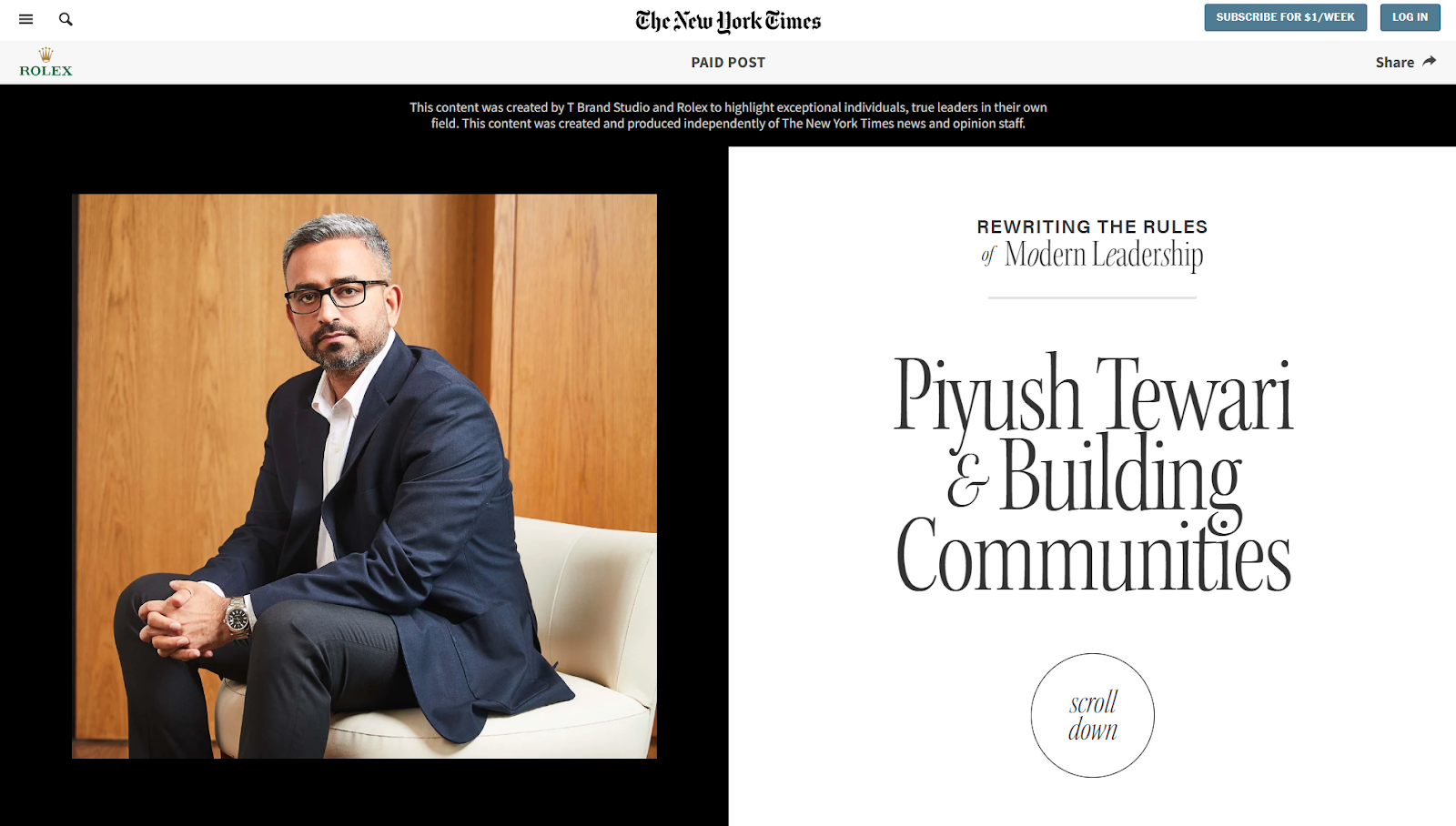
Native Ad Format – Advertorial
2. eBay X Gimlet Creative
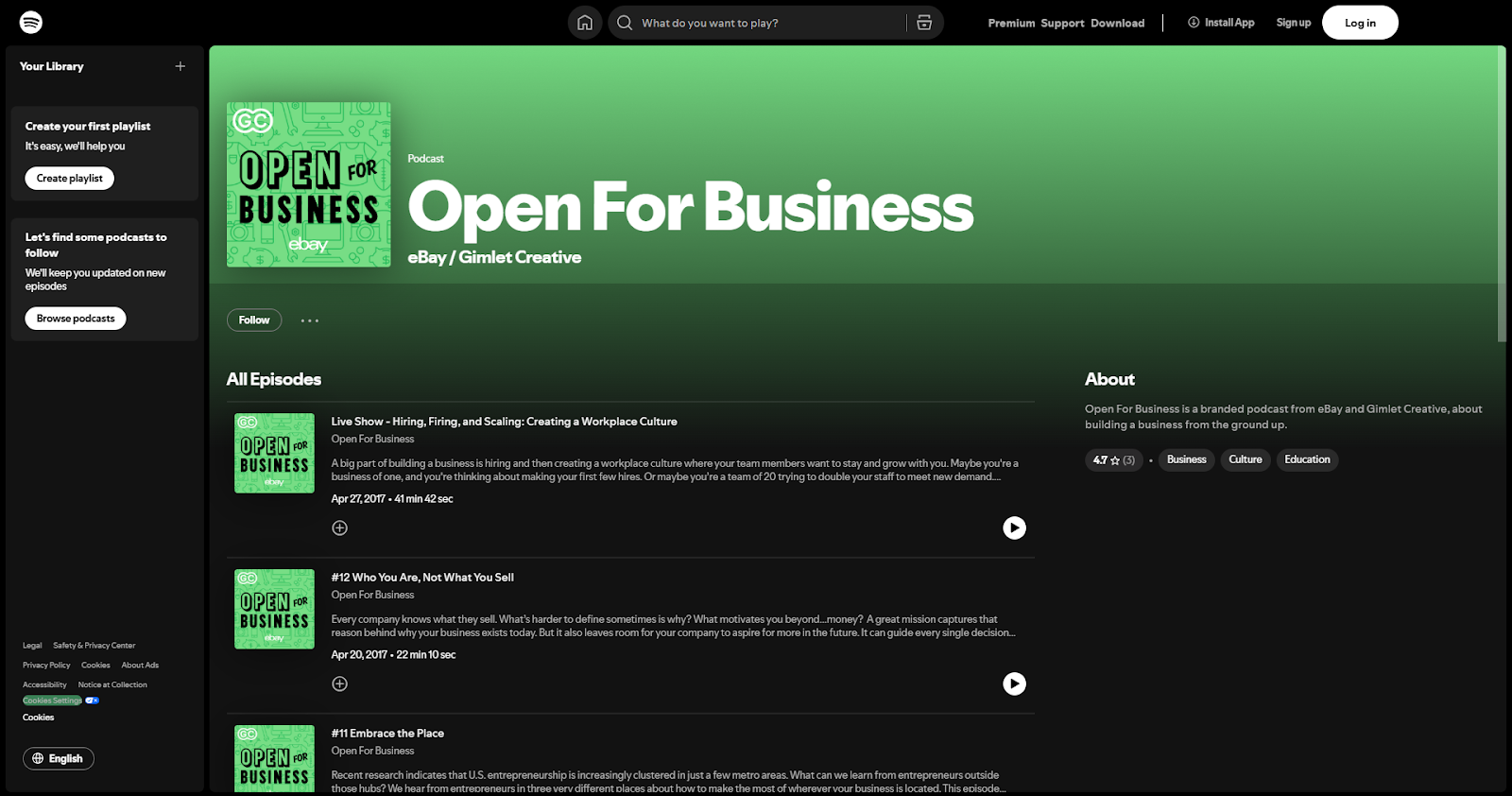
Native Ad Format – Branded Podcast (Advertorial Audio Content)
3. BuzzFeed X Purina
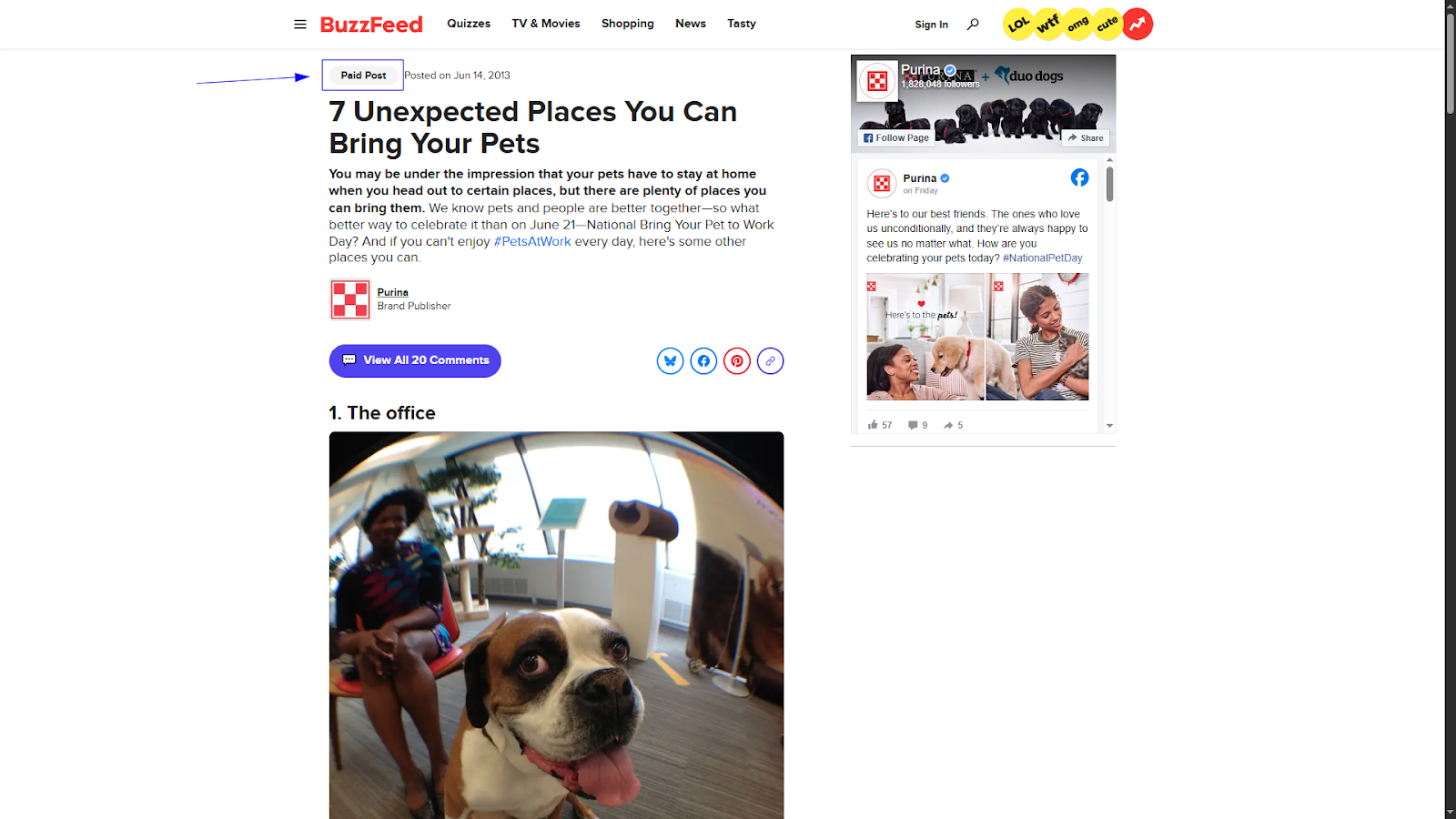
Native Ad Format – Sponsored Article
4. CNN International Commercial X Ford
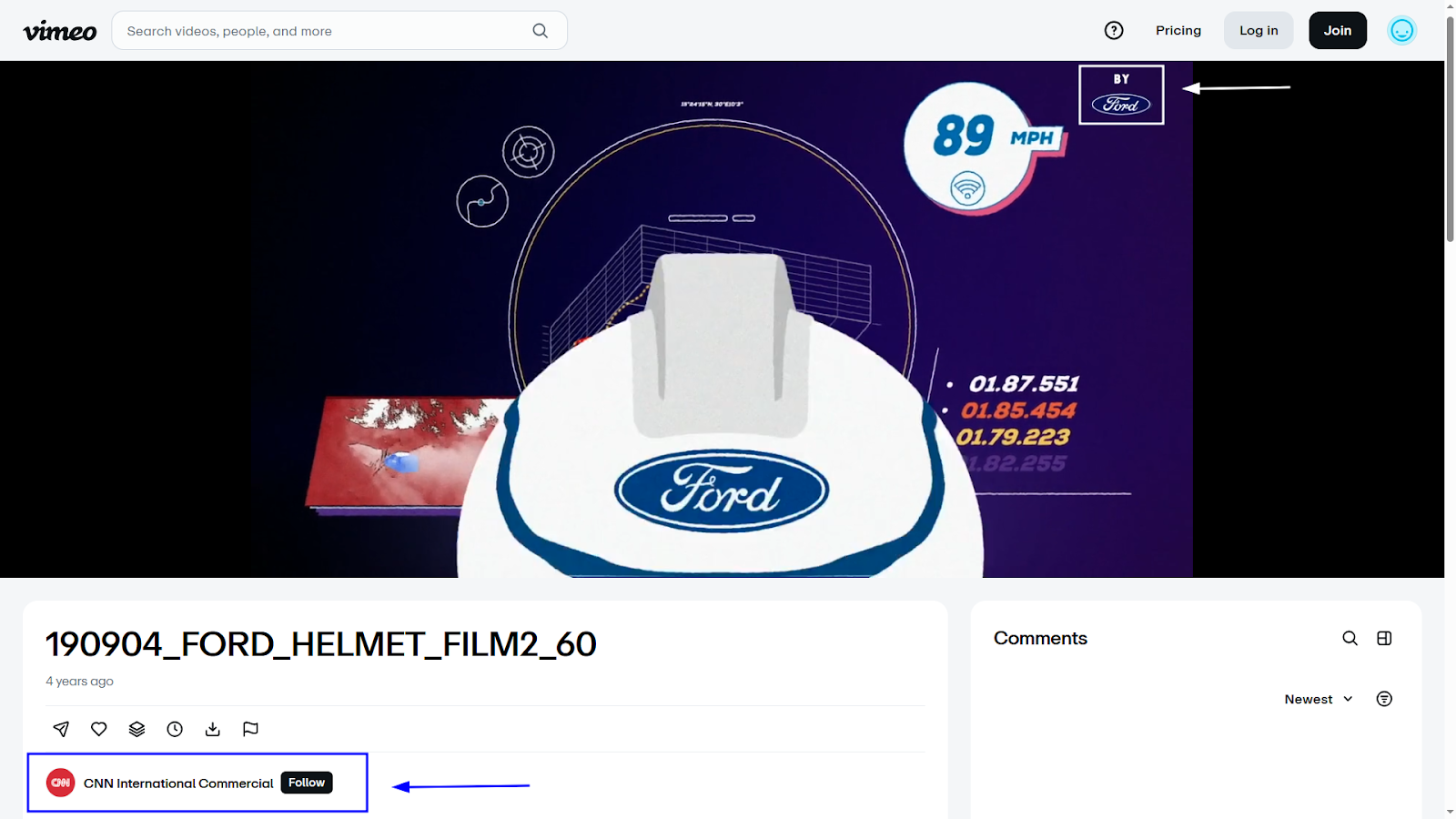
Native Ad Format – Video Ad
5. The Telegraph X Ikea
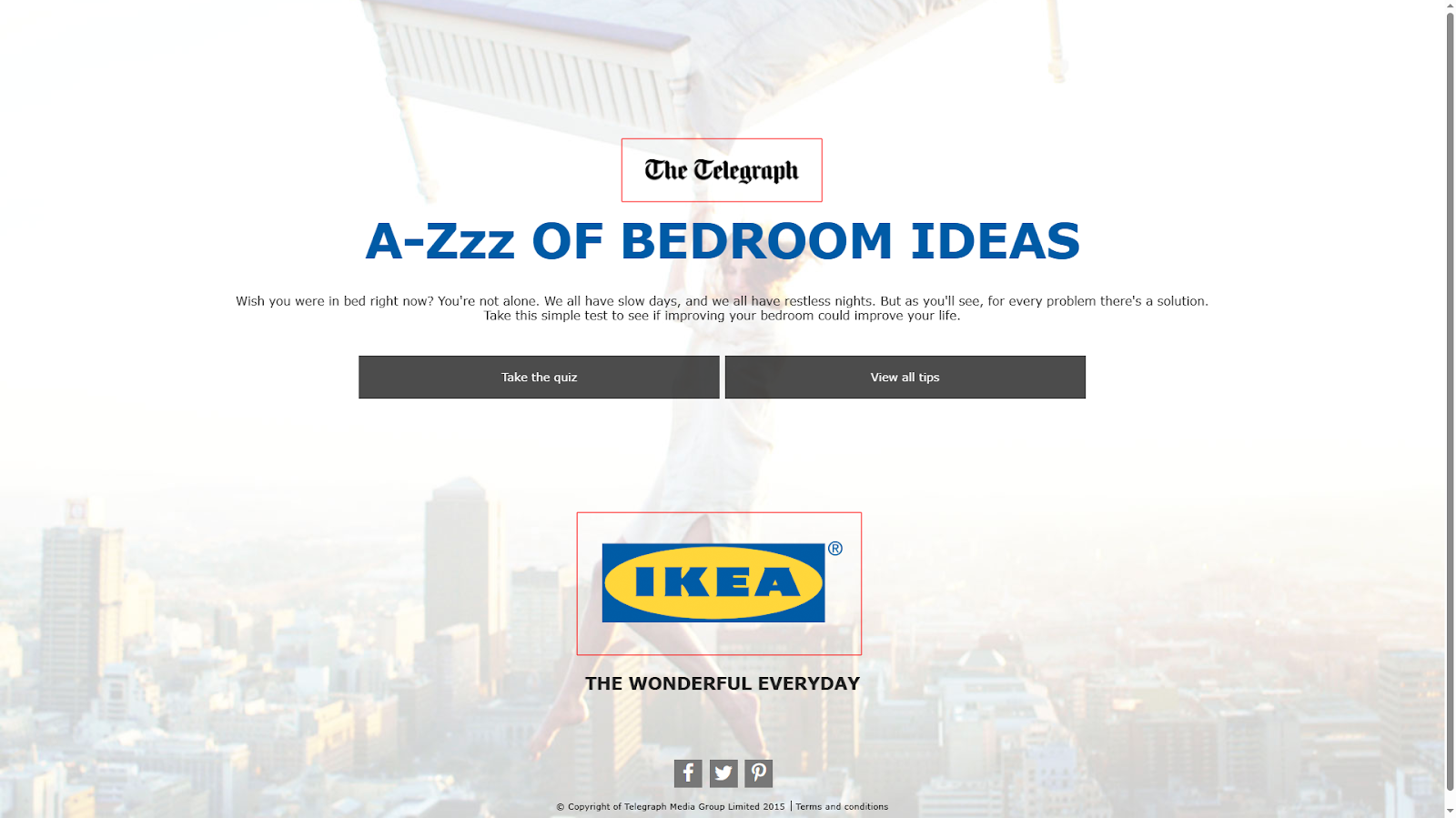
Native Ad Format – Interactive Native Ad (Quiz)
… Lastly
Planning your first native ads campaign might seem complex at first; however, with a clear roadmap, it becomes much more manageable and rewarding.
By following the steps we’ve outlined, you’re already setting yourself apart from most first-time advertisers who jump in without a clear native ads strategy. Keep in mind that success with native advertising is less about quick wins and more about building a consistent, well-optimized flow where every part of your campaign supports the next.
Make sure to test often and check on native ad example from similar businesses to stay ahead of native advertising trends.
The more you learn and optimize, the better your results will get.
Apart from that, our Ad Experts at Mint Your Store can help you improve your campaign strategy and help you scale better.
Book Your Consultation Call Today.
FAQ: Native Content Marketing
Here are a few more answers on doubts you may have or need detail on when you plan your first native ad campaign.
1. Who is your target audience, and how will you reach them through precise audience targeting and qualification?
Start by defining your target audience based on behavior and interests. Use platform tools for audience targeting and apply audience qualification to focus on those most likely to convert, ensuring your content reaches the right people.
2. What types of content resonate best with your audience across native ad platforms?
Choose content types that match user behavior, think blogs, video content, and interactive posts. Include visual content and multimedia elements to boost engagement and match platform norms.
3. How do you create compelling copy and visuals that feel native yet drive clicks?
Strong compelling copy and smart image selection make your ad both natural and clickable. Use headline optimization and clickable creatives to encourage action without disrupting the user experience.
4. What role does the user journey play in shaping your content strategy and CTA placement?
Map the user journey to guide messaging. Align your call-to-action (CTA) with user intent, educational early on, direct later. Match content style and depth to where users are in their path.
5. How should you budget for your native campaign using CPC and CPM models?
Choose CPC for action-focused goals and CPM for broad visibility. Set a realistic campaign budget, then test and adjust based on performance to maximize return.
6. Which publishing platforms and native ad networks best suit your campaign goals?
Select a publishing platform your audience uses, and test different native ad networks like Taboola or Outbrain. Match your content style with the network’s environment.
7. How do you test and optimize your native ad campaign through A/B testing and performance analysis?
Run A/B testing for headlines, visuals, and CTAs. Use performance analysis and metrics tracking to refine what’s working and scale the best-performing versions.
8. Can user-generated content or influencer marketing strengthen your native ad campaign’s authenticity?
Yes, user-generated content builds trust, while influencer marketing taps into engaged, niche audiences. Both make your native content feel more authentic and relatable.
